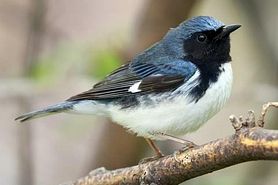Financing Land Acquisition
Knowles-Nelson Stewardship Program

Applicants should be familiar with what Stewardship grants can and cannot fund, how land value must be determined to satisfy Stewardship grant rules and what sources of a match can be used.
General information about grant-funded land purchase is described in DNR’s Land Acquisition Information for DNR grant applicants.
Additionally, Stewardship-grant specific information is found below.
When ordering the appraisal for this acquisition project, please request that your appraiser contact DNR's Review Appraiser before completing the appraisal report. All appraisals submitted with grant applications need to be reviewed; this consultation between appraiser and reviewer can help expedite that review process.
Appraisers should contact:
Greg Hicks, DNR Review Appraiser
Gregory.hicks@wisconsin.gov
608-640-7241
Property values
- Calculating The Value Of The Property
- State statutes dictate how land and easements are valued for Stewardship grant purposes. Applicants should discuss the appraisal problem with grant staff as early as possible, and before hiring an appraiser.
- Appraisals must meet Real Estate Contract and Appraisal Guidelines [PDF]. PUB-LF-048 2007
- All appraisals are reviewed by DNR. The grant award is calculated based on an acceptable appraisal.
- Many projects require two appraisals. If the property value (not the anticipated grant request) is over $350,000 state law requires two appraisals. The NCO must pay for one, DNR the other. A grant will be based on the lower of two acceptable appraisals.
- Grant awards may be calculated based on a short tenure rule. If the seller has owned the land being purchased with grant funds for less than three years, a grant award may be calculated based on the seller’s acquisition cost, not current appraised value. Contact grant staff for more information.
Sponsor match
- Eligible Sources Of Sponsor Match
- Sponsor match is that portion of eligible acquisition costs not funded by a Stewardship grant. The sponsor must provide at least 50% of project costs from non-state sources. Eligible sources of sponsor match include:
- cash from the sponsor and/or third party contributions;
- funds from a local government or the federal government;
- property value donated by the seller - a "bargain sale"; and
- the value of a property donated to the sponsor or acquired with non-state funds, if the applicant acquired such land within three years of the closing date for the parcel in the application.
- Some Cautions About Sponsor Match
-
- Funds from other state sources cannot be used as sponsor match. If the source of the match is non-state money administered by the state (as several federal grants are), confirm with the funding agency that those funds are not legally characterized as state money.
- The total amount of funding from all government sources and restricted to the same acquisition costs cannot exceed 100% of those acquisition costs. If funding from other government sources exceeds 50% of those costs, then Stewardship funding will be reduced accordingly.
- All sources of sponsor match must be fully disclosed. Sponsors are required to submit a detailed accounting of project funding sources at the time of contract.
- Using Other Property As Sponsor Match
- Stewardship rules allow grant sponsors to offer property they own -- land or conservation easements donated to them or purchased with non-state funds -- as a match. When property is used as a match, up to 50% of the fair market value of that land may be used to cover the sponsor's share of acquisition costs. The sponsor retains title to the property used as the match, but the property becomes part of the Stewardship program and is subject to the obligations, terms and conditions of the Stewardship grant contract.
Stewardship program rules about land used as match differ from those of other public grant programs like NAWCA. Sponsors using land as match need to consider:
- Eligibility - property offered as a match must be eligible for Stewardship grant funding.
- Public access - property offered as match must be open to the public for nature-based recreation.
- Timing of the acquisition - land offered as match must have been acquired within three years of the closing date for the parcel in the application.
- Existing restrictions - land that is legally encumbered by permanent conservation restrictions may not be eligible as a match. Similarly, land subject to regulations that require it be managed as open space, conservation and/or public outdoor recreation may not be eligible: lands obtained through a subdivision parkland dedication ordinance are not eligible.
- Appraisal - the value of the donated property must be determined by an appraisal that will be reviewed and accepted by DNR.
- Grant calculation - sponsors cannot receive more in grant funds than the amount needed to cover eligible acquisition costs. If 50% of the value of match land is more than the amount needed, that excess value will not yield cashback to the sponsor.
Eligible expenses
Stewardship grants cover up to 50% of property value and 50% of eligible acquisition costs. Eligible acquisition costs include:
- Land surveys if required by DNR.
- Appraisals. If the property value exceeds $350,000, two appraisals are required. In those cases, DNR cannot cost-share on the applicant’s appraisal cost.
- Title evidence.
- Recording fees.
- Phase 1 Environmental Assessments (environmental inspections completed by NCO staff or volunteers are not eligible expenses).
- Historic and cultural assessments if required by DNR.
- Legal fees up to $1,000 per grant.
- Signage. DNR will reimburse 50% of the cost of signs required by law on Stewardship lands up to $1,000.
- Relocation payments if required.
Expenses not covered by the grant include environmental clean-up costs, brokerage fees paid by the buyer, demolition of buildings, real estate transfer taxes and other costs not identified above.
